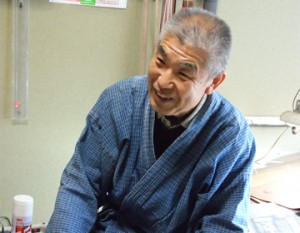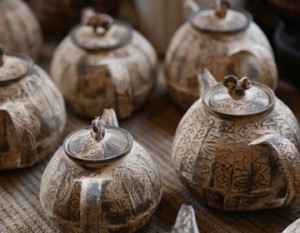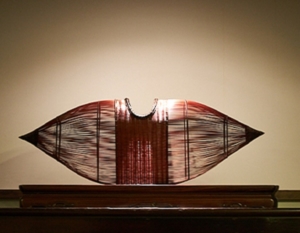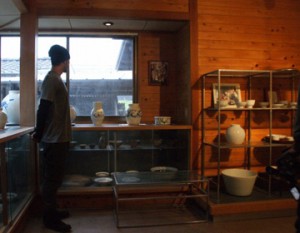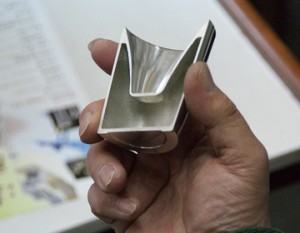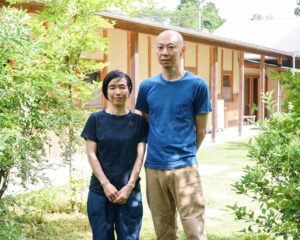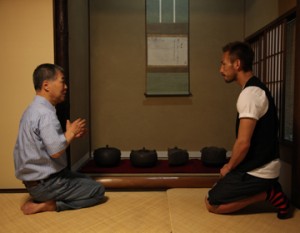The reason why “Nambu iron” became rooted in the area
There are many uses of ”Nambu ironware”. The traditional tea kettle or iron kettle is a good example. And there are frying pans and pots that are related to cooking. And there are small metal ware such as wind chimes. There are many varieties of items within ”Nambu iron”. Sashu Chuzojo where we visited, produces mainly traditional iron kettles. According to Kazu Sato whom we interviewed, the iron kettle makes up 90 percent of everything they produce and is in high demand.
Sato claimed it is not an exaggeration to say that the mold determines everything for iron casting.
Sand and clay are used for casting. The clay that you can get from the Oshu area where the studio is based, is not for pottery, but is more suitable for molds for casting iron. That is the reason why iron casting took root in this area. When you have plenty of material, it is possible to mass produce iron kettles. At the studio of Sato, he can cast up to 120 kettles at a time for normal size kettles. Also, the clay that the mold is made from is strong, so one mold can be used about 10 times to create iron kettles of the same shape.

The product changes as the lifestyle changes
”There is a culture for iron containers throughout the Northeast part of Japan. Amongst those places, we are highly skilled in making large quantities by hand. To support that, we have been making day to day wear. Compared to those made as an art pieces, they may not be quite as refined, however I think the environment of providing products that everyone can buy and use day to day has supported the culture of iron ware in this area.”
Even though it is rooted to daily life, lifestyles and the region can also change with time. Nakata asked ”Do you think the product has changed as the lifestyle changed with the spread of IH?” The response was ”Yes, size has changed. I think it has become smaller. And the bottom became flatter. Many old ones have a round bottom.”

A product created by ex-bartender
Sato used to work as a bartender when he was living in Tokyo. He could not have imagined his current work of making Nambu iron. However the experience as a bartender has benefitted his iron kettle making.
”Now, I am making standard iron kettles, or those with very little arrangement. However when I started, it was different. I felt I needed to be entertaining the customer when I was bartending, so when I started, I think I wanted to make products that would be entertaining.”
As Sato described, we saw an iron kettle in the shape of an apple that was made in the early days. Nakata liked that and suggested a series of fruit shaped kettles. He suggested various fruits such as pears and watermelon. It made an impression as we watched Sato listen to these ideas in amusement. Adding the artisan’s imagination to the traditional iron ware. He will continue to pursue iron ware that only the soil from this area can create.





